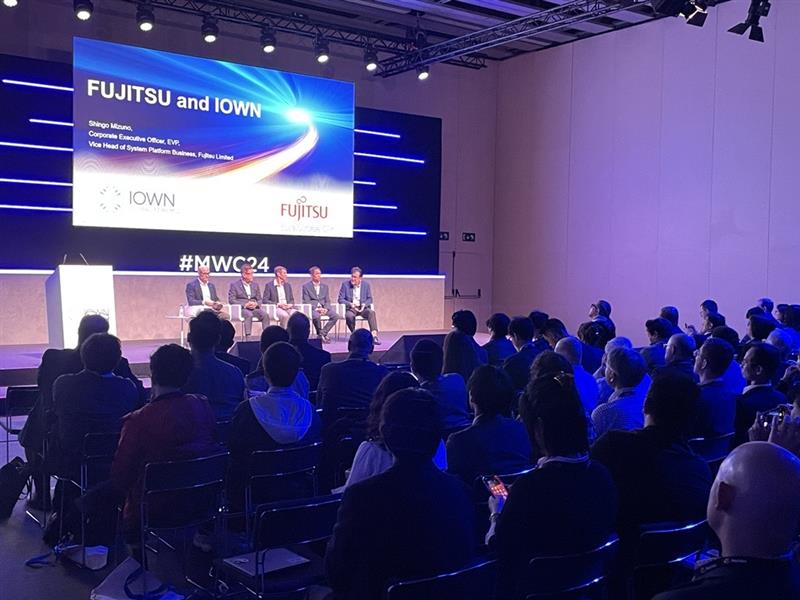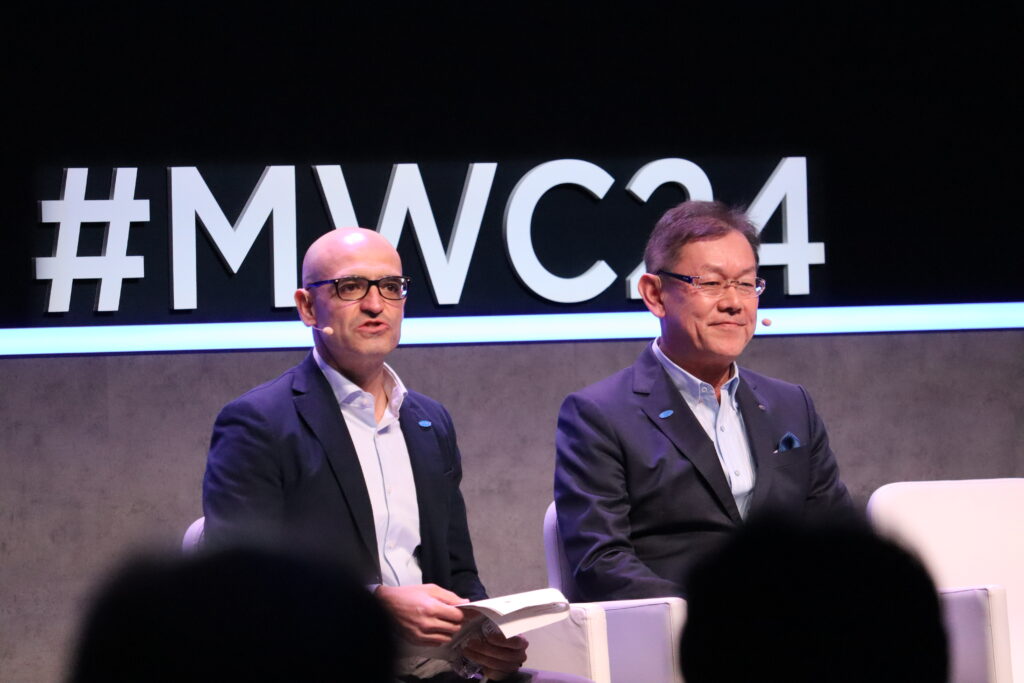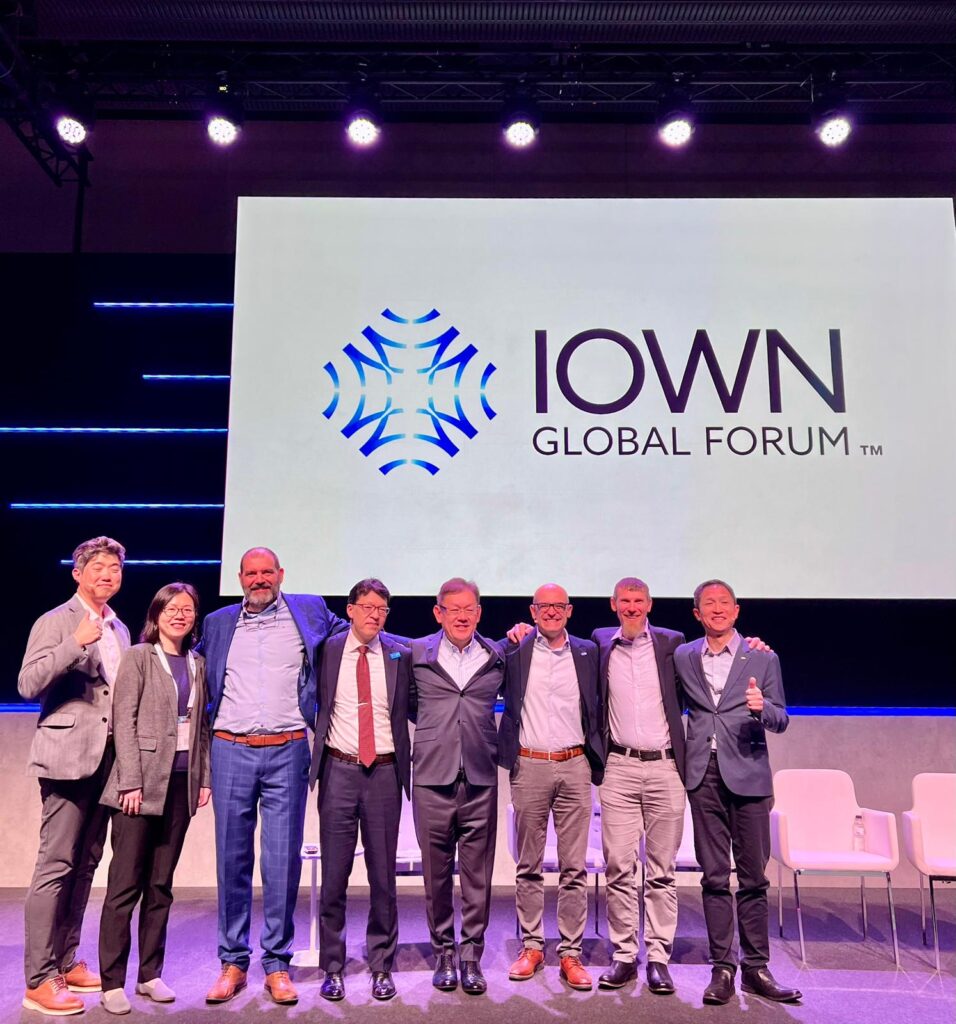

 Most of our modern communication technologies rely on electrons to transmit information. However this requires increasing power that generates heat and inefficiencies. In addition electrons present limitations that prevents us from achieving a near instantaneous, hyperconnected world that we have been waiting for. Photonics based technologies offer an alternative solution. At the IOWN Global Forum, we are leading the development of technology that surpasses electronics in the ability to transfer and process vast quantities of data at previously inconceivable speeds and ultra low latencies.
Most of our modern communication technologies rely on electrons to transmit information. However this requires increasing power that generates heat and inefficiencies. In addition electrons present limitations that prevents us from achieving a near instantaneous, hyperconnected world that we have been waiting for. Photonics based technologies offer an alternative solution. At the IOWN Global Forum, we are leading the development of technology that surpasses electronics in the ability to transfer and process vast quantities of data at previously inconceivable speeds and ultra low latencies.
The next generation of AI systems will generate massive volumes of distributed data and processing capacity requirements. During our Power90 Session at Mobile World Congress (MWC) in Barcelona, we explored how our Open All-Photonics Network (APN) can meet this challenge head on, ushering in a world of new use cases and redefining what is possible. From remote robotics in hazardous industries like mining and construction to telemedicine tools for remote healthcare access, from bio-digital twins to huge-scale entertainment events, the applications and advantages of the APN are ground-breaking and vast.
Why do we need an APN? And why now?
The global and unwavering boom in AI is driving a massive demand for network, computing and storage requirements. We also face a dramatic increase in data traffic and power consumption due to ubiquitous availability of mobile devices, and increasing use of data generating devices and sensors throughout our homes, businesses, and government. Considering this exponential growth, the current electron-based network will soon need to be updated in order to effectively support this trend. Therefore, the members of the IOWN Global Forum share the collective mission of delivering the next level networking and data processing required with multiple capabilities including security and resource management. The APN that we are striving to implement is a clear solution to tomorrow’s technology infrastructure needs. The IOWN Global Forum’s is focused on supporting those future needs, while at the same time having a goal to lower power consumption by 100x and reduce latency by 200x with this technology.
Previously, it has been difficult for non-telcos to own optical transmission systems. Early-stage transceivers used to be rack-scale systems but now they are significantly smaller – about the size of a finger. We have thus entered an era in which the deployment of optical technology is far easier and we expect to see many enterprises building their own optical backbone networks as a result.
Building a secure and sustainable network
As our spokespeople emphasized during MWC, resiliency and security are two of photonic networks’ most important qualities and are critical for enabling the next generation of use cases. With a cyberattack projected to occur every 39 seconds and cybercrime forecasted to cost $10.5 trillion globally by 2025, security should be on the top of the agenda of every organization in the world. The APN will enhance cybersecurity by allowing the protection of high volumes of data in real time, while high-capacity, low-latency optical networks will facilitate highly-distributed storage and computing infrastructure, bolstering resilience against disruptions.
The APN also offers a solution to growing sustainability burdens. Mass use of AI is layering another 20% annual compound growth on top of what is already an unsustainable global level of energy consumption and computing demand. To address this issue, solutions must simultaneously prioritize both speed and sustainability. Transitioning from electronics to photonics will increase capacity, reduce latency, and decrease power consumption, thereby lowering carbon emissions. Further, embracing more distributed infrastructure will enable a greater utilization of renewable energy sources. The IOWN Global Forums’ APN will empower organizations to achieve more with technology while minimizing environmental footprint. For instance, for NTT to hit its 2040 net-zero target, 45% of savings will be attributed to the IOWN Global Forum’s photonics technology.
What is next for the IOWN Global Forum?
Having demonstrated the clear benefits of APN technology, the next phase of our deployment is centred around three prioritized use cases. Firstly, we aim to enhance financial services infrastructure by providing a high-performance transaction database that maximizes the low-latency capabilities of our technologies. Secondly, we will target media transport, with an initial focus on assisting broadcasters in transmitting video feeds seamlessly from edge to production studios. Thirdly, we will prioritize AI-based product development, catering to industries such as automotive and healthcare that require GPU infrastructure for AI applications. We are anticipating the first potential commercial deployments as early as 2025.
We’re approaching a critical juncture where change becomes inevitable. The IOWN Global Forum is taking proactive steps by implementing the necessary technology now to ensure readiness when this inflection point arrives. But it isn’t simple and can only be achieved with a global and open collaborative effort. An effective transition to photonics from electronics must be driven across the world. Companies from North America, Europe and APAC – as well as developing economies in Africa and South America – all need to be part of this. By fostering this unity, the IOWN Global Forum seeks to sustain the momentum of photonics and drive innovation forward, ultimately achieving a more sustainable and high-performance technology ecosystem and infrastructure.


